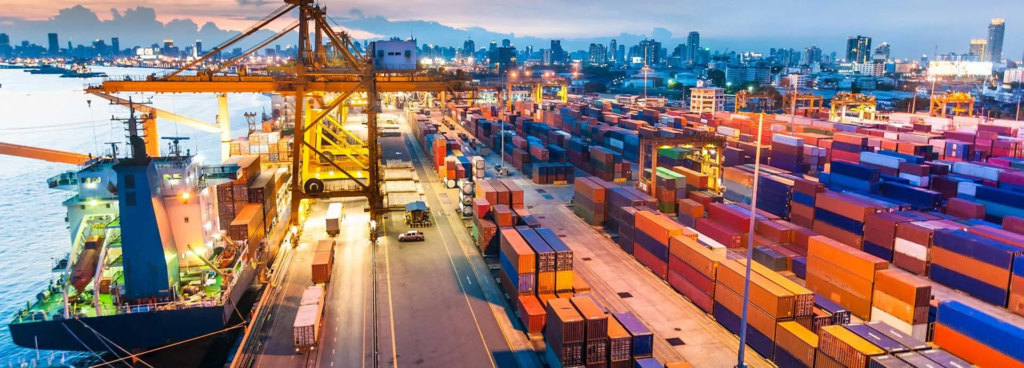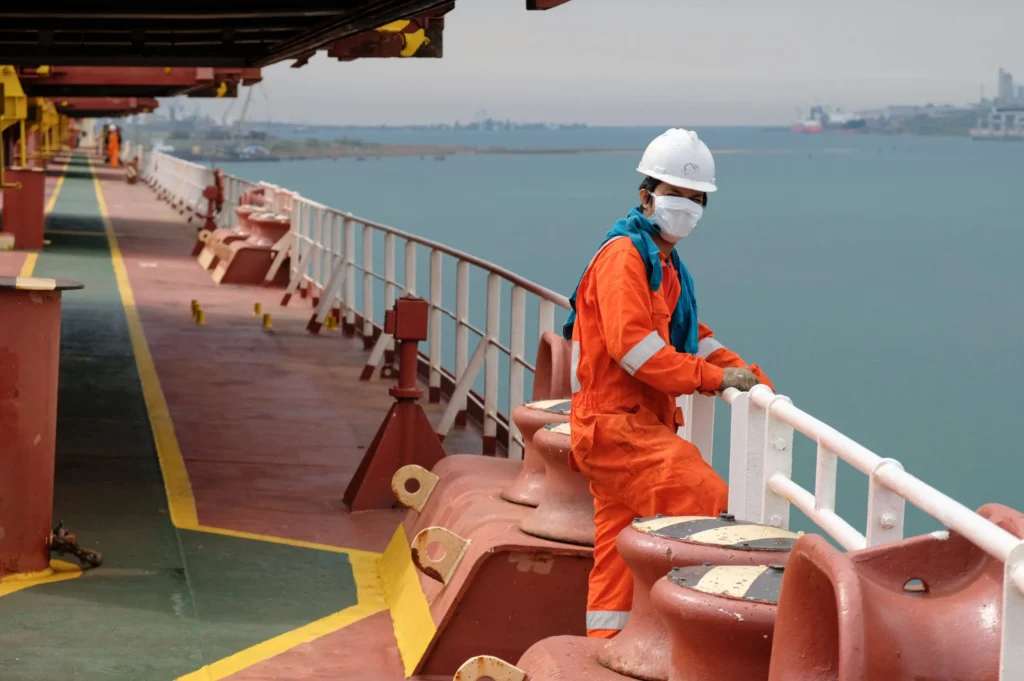Shipping in 2024 is expected to be a challenging year for the industry due to various factors. As we know shipping industry is a vital component of the global economy, facilitating the movement of goods and driving international trade.
It encompasses diverse segments, including container shipping, bulk shipping, tanker shipping, and specialized services like LNG, LPG and Chemical shipping.
Shipping offers a cost-effective solution for transporting goods over long distances, contributing just 0.3p to the £2.50 cost of a cup of coffee, 20p to the £5 cost of a bottle of wine, and $5 to the $100 cost of a Nike trainer. It has the lowest environmental footprint in the transport segment on a per-ton basis.

Here are some key trends and challenges that shippers and importers should be aware of
New Transportation Regulations
- The European Union is implementing new reporting and transparency requirements on greenhouse gas emissions, which may be followed by similar regulations from the International Maritime Organization.
- Sustainable development is an important topic among shipping companies, with many implementing solutions to reduce greenhouse gas emissions on new vessels.
Shipping from China
The demand for Chinese products in North America and Northern Europe has decreased, but it has increased in the Middle East, North America, and the Indian subcontinent.
The trend of import diversification continues, with importers to the US ordering more goods from Southeast Asia, India, and Pakistan, following the “China plus one” strategy.
Freight rates are likely to increase, especially on the China-Europe route, which has seen a ¼ per week increase in rates.
Shipping Time and Capacity
Transport time from China has extended, with the sea route around the Cape of Good Hope adding up to two weeks to the Asia-Europe route and 10-14 days to deliveries from Asia to the US East Coast.
Rail freight is currently comparable to sea transport, but rail transport from China to Europe can take up to 50 days in some cases.
Global Shipping Challenges
A surge in new ship capacity is expected, with 27% of the global fleet being added in 2024. This increase in capacity is happening at a time when global demand is expected to decrease by 3-4% in both 2024 and 2025.
Mega-ships, which are not very flexible at ports, will pose challenges for shipping companies.
Geopolitical tensions and military conflicts, such as those in the Bab el-Mandeb strait and potential conflicts in Taiwan, could disrupt trade flows and lead to the duplication of supply chains.
Also Read, US overtook Qatar and Australia in LNG Exports in 2023
Weather Conditions
A severe El Niño is forecasted for 2024, which could result in extreme weather conditions affecting international shipping, including reduced volumes, changes in trade patterns, and increased pressure on alternative modes of transportation.
Low water levels in waterways, such as the Panama Canal, the Rhine River, and the Great Lakes, will lead to a shift towards road and rail transport, resulting in higher costs and increased emissions.
Economic and Geopolitical Factors
- Economic uncertainty and geopolitical tensions will continue to impact the shipping industry, with potential military conflicts and trade sanctions affecting trade flows.
- The risk of open warfare and market regulation could also influence freight rates.
Supply Chain Management

- Shippers should be prepared for every situation, including unfavorable weather conditions, production delays, or random situations, and add about 10 days of potential slippage to their timelines.
- Importers should diversify transport solutions, use multimodal connections, and negotiate the best Incoterms for their transport.
Main challenges for International Shipping in 2024

The main challenges facing international shipping in 2024 include:
- Red Sea Conflicts and Diversions:
- Escalating Tensions and Conflicts:
- Ongoing war in Ukraine, affecting the grains trade and leading to increased costs and delays.
- Tensions between China and Taiwan, which could impact crucial trade lanes.
- Geopolitical tensions and military conflicts, such as those in the Bab el-Mandeb strait and potential conflicts in Taiwan, could disrupt trade flows and lead to the duplication of supply chains.
- New Transportation Regulations:
- The European Union is implementing new reporting and transparency requirements on greenhouse gas emissions, which may be followed by similar regulations from the International Maritime Organization.
- Sustainable development is an important topic among shipping companies, with many implementing solutions to reduce greenhouse gas emissions on new vessels.
- Shipping from China:
- Weather Conditions and Natural Disasters:
- Severe El Niño forecasted for 2024, which could result in extreme weather conditions affecting international shipping, including reduced volumes, changes in trade patterns, and increased pressure on alternative modes of transportation.
- Low water levels in waterways, such as the Panama Canal, the Rhine River, and the Great Lakes, will lead to a shift towards road and rail transport, resulting in higher costs and increased emissions.
- Economic and Geopolitical Factors:
These challenges will require careful planning, adaptability, and strategic decision-making from shippers and importers to navigate the complex and dynamic environment of international shipping in 2024
Shipping Industry and Sustainability challenges

The shipping industry is addressing sustainability challenges through a multifaceted approach that encompasses environmental, social, and economic aspects. Key initiatives include:
Decarbonization and Lower Emissions: Implementing alternative energy sources, such as wind propulsion and advanced hull coatings. Improving energy efficiency through measures like cold ironing (shore power) and optimizing routes. Exploring alternative fuels like LNG, hydrogen, and solar panels.
Environmental Regulations: Compliance with the International Maritime Organization (IMO) regulations, such as the 2020 sulphur cap and the Ballast Water Management Convention (BWM).
Managing ballast water to meet the D-2 standard by the final deadline of September 8, 2024.
Digitalization and Automation: Investing in technologies like automation, artificial intelligence, and data analytics to optimize operations and reduce emissions.
Implementing digital skills training for seafarers to adapt to the changing industry.
Human Sustainability: Prioritizing seafarer well-being by addressing mental health, providing better recreational facilities, and ensuring regular communication with families.
Implementing global labor standards, promoting corporate social responsibility, and enhancing training and education for seafarers. Fostering diversity and inclusion to attract a broader talent pool and promote innovation.
Cost Management: Managing the cost implications of new regulations, such as the 2020 sulphur cap, through efficient solutions like scrubbers and low-sulphur fuels
Shipping companies are expected to experience greater profitability in 2024 due to factors such as fuel prices, geopolitical and economic uncertainty, and the risk of open warfare.
However, the industry will need to adapt to a significantly changed environment, with shippers needing to adjust to a new supply and demand balance.
Overall, shipping in 2024 will require careful planning and adaptability to navigate the challenges posed by new regulations, capacity changes, weather conditions, and economic and geopolitical factors.

